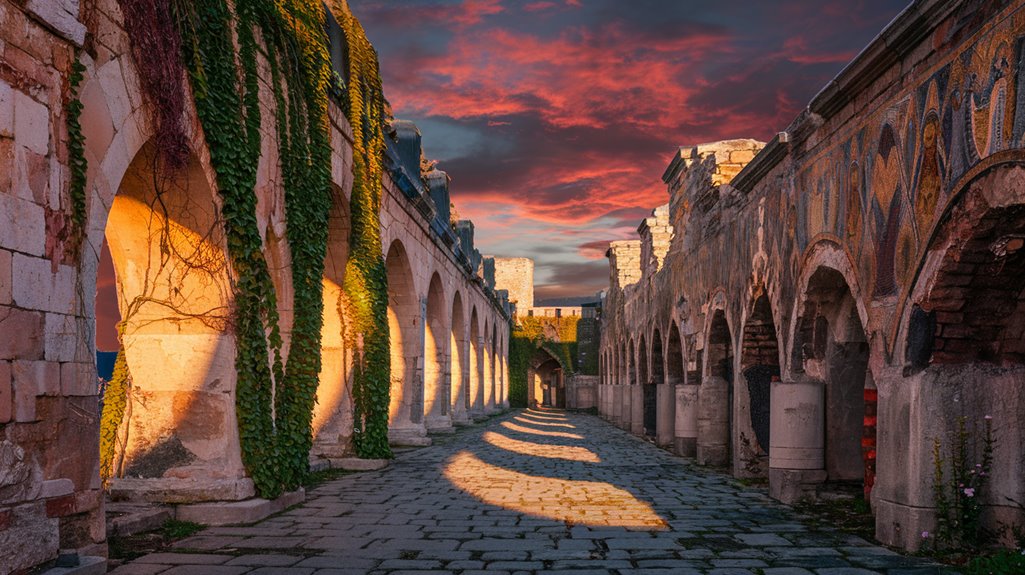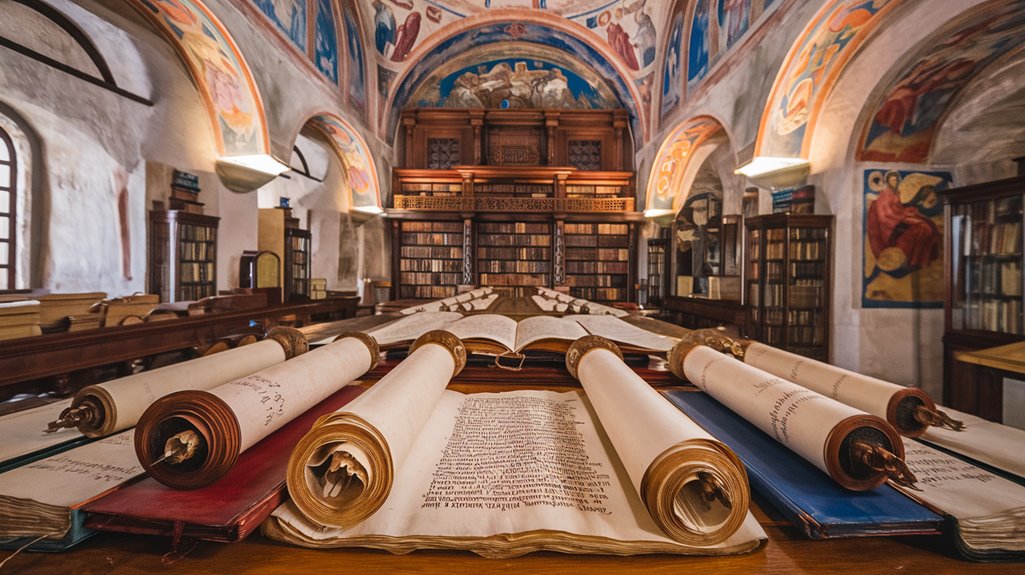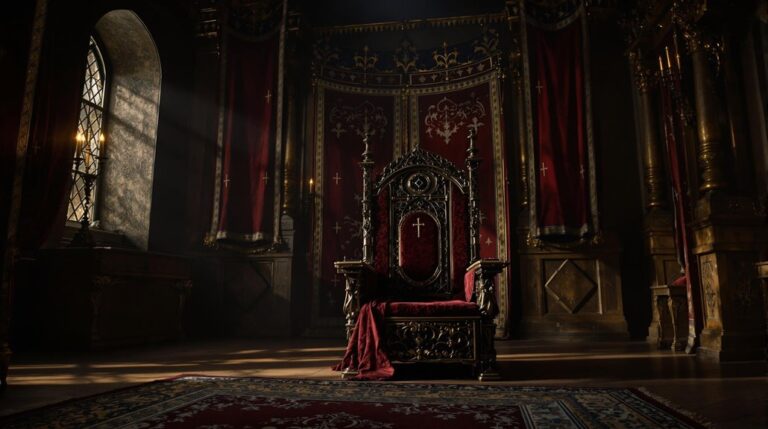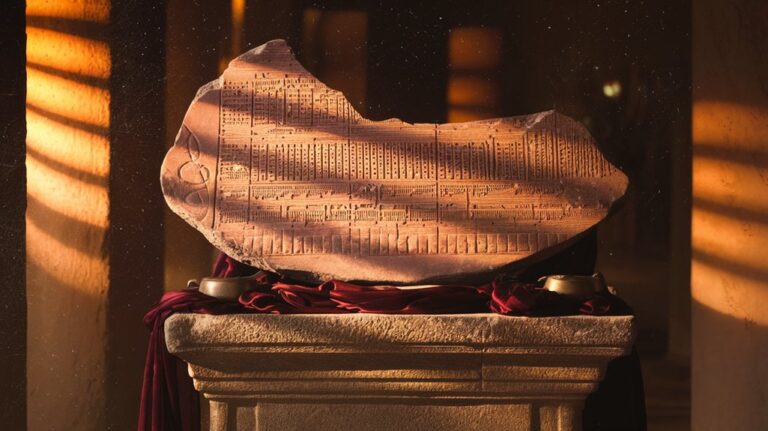The Byzantine Empire Fell Just Before Columbus’s Voyage
Like Rome wasn't built in a day, Constantinople didn't fall in one either. You'll find it fascinating how two seemingly unrelated events — the Ottoman conquest of Byzantium in 1453 and Columbus's journey in 1492 — are actually linked in ways that shaped our modern world. As you explore this 39-year gap, you'll discover how the fall of one empire sparked a chain reaction that pushed European powers toward the unknown, forever changing the course of global history. Let's uncover these connections together.
The Final Days of Constantinople: 1453 Vs Columbus's 1492
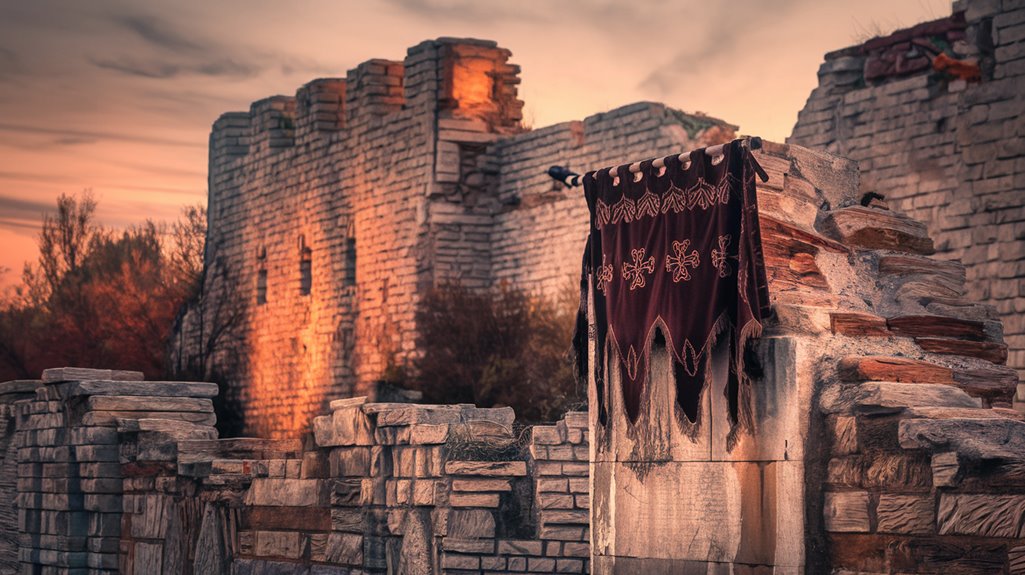
While most people remember 1492 as the year Columbus sailed across the Atlantic, an equally momentous event occurred just 39 years earlier that would reshape the medieval world.
In 1453, you'd have witnessed the mighty walls of Constantinople finally crumble under relentless Ottoman siege tactics. Sultan Mehmed II's massive army of 80,000 men employed revolutionary Ottoman cannons, particularly the powerful Basilic cannon, to breach the city's ancient defenses. The skilled Hungarian gunsmith Urban had designed these devastating weapons specifically for the siege. Western European nations refused to send meaningful aid since the Byzantines rejected Catholic conversion demands.
You'd have seen just 7,000 Byzantine soldiers and 35,000 armed civilians desperately trying to defend their city against overwhelming odds.
As Ottoman ships blocked the Bosporus and even crossed land to enter the Golden Horn, Constantinople's fate was sealed. This pivotal moment marked the end of the thousand-year Byzantine Empire and opened the door to Ottoman dominance in Eastern Europe.
A World-Changing Transition: From Byzantine to Ottoman Rule
As the Ottoman Empire rose to power under Osman I's leadership, you'd have witnessed a dramatic shift in the balance of medieval power.
Ottoman expansion proved relentless, as they systematically absorbed smaller Turkish states and conquered Byzantine territories, including the strategic cities of Nicaea and Nicomedia by 1337. The Ottomans strengthened their position by constructing massive fortresses along the Bosphorus to control vital supply routes.
Despite Byzantine resilience through centuries of external threats and internal struggles, you'd have seen their gradual decline accelerate under mounting pressures.
The empire's military weakness, religious divisions, and economic strains made them increasingly vulnerable to Ottoman advances. The empire was further crippled by heavy taxation policies implemented during Michael VIII's reign.
When Constantinople finally fell to Mehmed II in 1453, you'd have observed the end of a 1,100-year legacy.
The transformation was profound – Hagia Sophia became a mosque, the city was renamed Istanbul, and Islam spread throughout the Eastern Mediterranean and Balkans.
The Strategic Impact of Byzantine Knowledge on European Exploration
The fall of Constantinople sparked an unexpected chain of events that revolutionized European exploration and trade. When Ottoman forces disrupted traditional trade routes, European merchants found themselves cut off from their profitable Asian markets. This crisis forced them to seek alternative routes, ultimately driving the Age of Exploration.
What's particularly fascinating is how Byzantine manuscripts and scholarly influence played an essential role in this transformation. As Greek scholars fled west, they brought with them preserved ancient knowledge of navigation, geography, and science. The spread of Islam throughout the Eastern Mediterranean and Balkans made the search for new trade routes even more urgent for European powers.
These texts, combined with classical learning that had been safeguarded in Byzantine institutions, provided European explorers with critical tools for maritime ventures. The hardened European attitudes toward Islamic control of trade routes further intensified the urgency to find new paths to Asia. You'll find that this transfer of knowledge, along with the economic pressure to find new trade routes, created the perfect conditions for Europe's revolutionary age of discovery.
Cultural Exchange Between East and West During the 15th Century
During the vibrant 15th century, cultural exchange between East and West reached unprecedented levels through established trade routes and diplomatic relations.
You'll find that cultural syncretism flourished as merchants braved challenging routes to exchange not just goods, but ideas and innovations. Trade innovations transformed how people conducted business, while architectural styles merged Eastern and Western elements. The magnetic compass technology revolutionized maritime navigation and exploration during this period. The exchange of corn and potatoes from the Americas would soon transform agriculture and diets across Europe and Asia.
- You'll discover Gothic architecture incorporating pointed arches from Islamic designs
- You can trace how Buddhism and Islam spread along trade routes
- You'll notice the fusion of artistic techniques creating unique cultural expressions
- You'll find that merchants exchanged navigation tools and military technology
The exchange wasn't always peaceful, as evidenced by the complex nature of the Crusades, but it permanently transformed both Eastern and Western societies through the continuous flow of knowledge, goods, and cultural practices.
How the Fall of Byzantium Reshaped Mediterranean Trade Routes
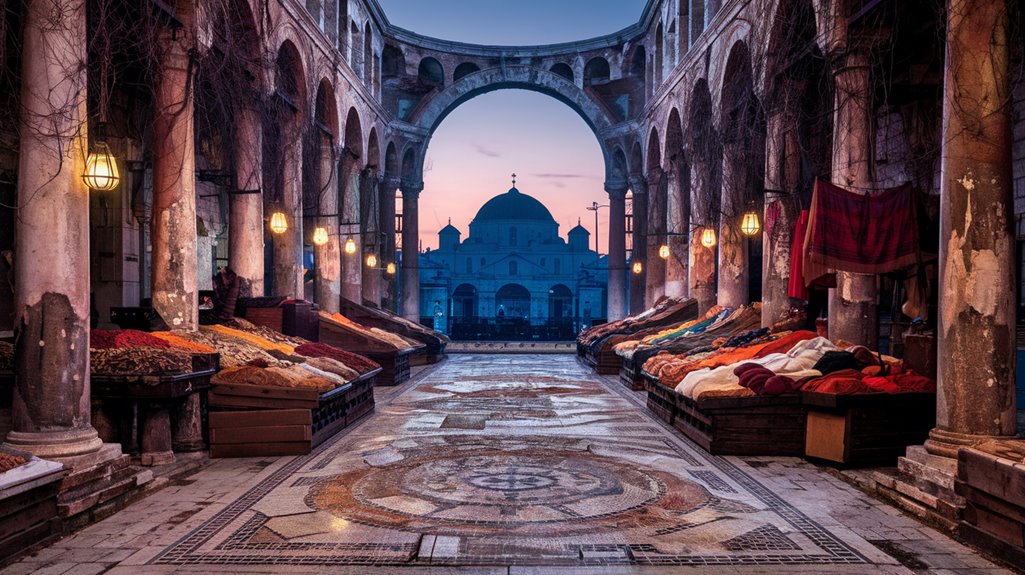
While cultural exchange flourished across medieval trade networks, Constantinople's fall in 1453 dramatically altered Mediterranean commerce forever.
You'll find that this pivotal event caused massive trade disruption throughout Europe, as the city had been the primary hub connecting East and West. The state-appointed customs officials who once collected duties at stations throughout the empire suddenly vanished, with their duties and regulations disappearing.
The Ottomans' control of Constantinople forced European merchants to either pay hefty fees or seek new routes to Asia. This pressure sparked the Age of Exploration, as traders desperately sought alternative paths to Eastern goods. The city experienced a remarkable economic revival under Ottoman rule.
You'd see Italian merchants shifting their investments to Spanish and Portuguese ventures in the New World.
The Mediterranean and Black Sea became "Turkish lakes," with Ottoman control reshaping centuries-old trading patterns.
The fall effectively ended Byzantine state control over maritime commerce, leading to increased private trading and new commercial partnerships.
Legacy of Byzantine Scholars in Renaissance Europe
After Constantinople fell to the Ottomans, Byzantine scholars fled to Western Europe, bringing with them a treasure trove of classical knowledge that would ignite the Renaissance.
Through Byzantine education and Greek manuscripts, they revolutionized learning in Western universities, teaching Greek language and philosophy to enthusiastic students. Their humanist influence shaped how Europeans viewed history, using ancient examples to guide virtuous living. The scholars brought invaluable knowledge of ancient legal systems that influenced European law for generations. By 1500, Venice's Greek community numbered approximately 5,000 as refugees continued arriving from Byzantine territories.
You'll find their cultural transmission evident in these lasting contributions:
- Teaching Greek language and literature in prestigious European universities
- Preserving and sharing classical manuscripts that formed the foundation of Renaissance thought
- Introducing virtue studies through historical examples of Greek antiquity
- Influencing art, architecture, and educational systems across Europe
Their legacy transformed Western civilization, making classical knowledge accessible and shaping European identity for centuries to come.

